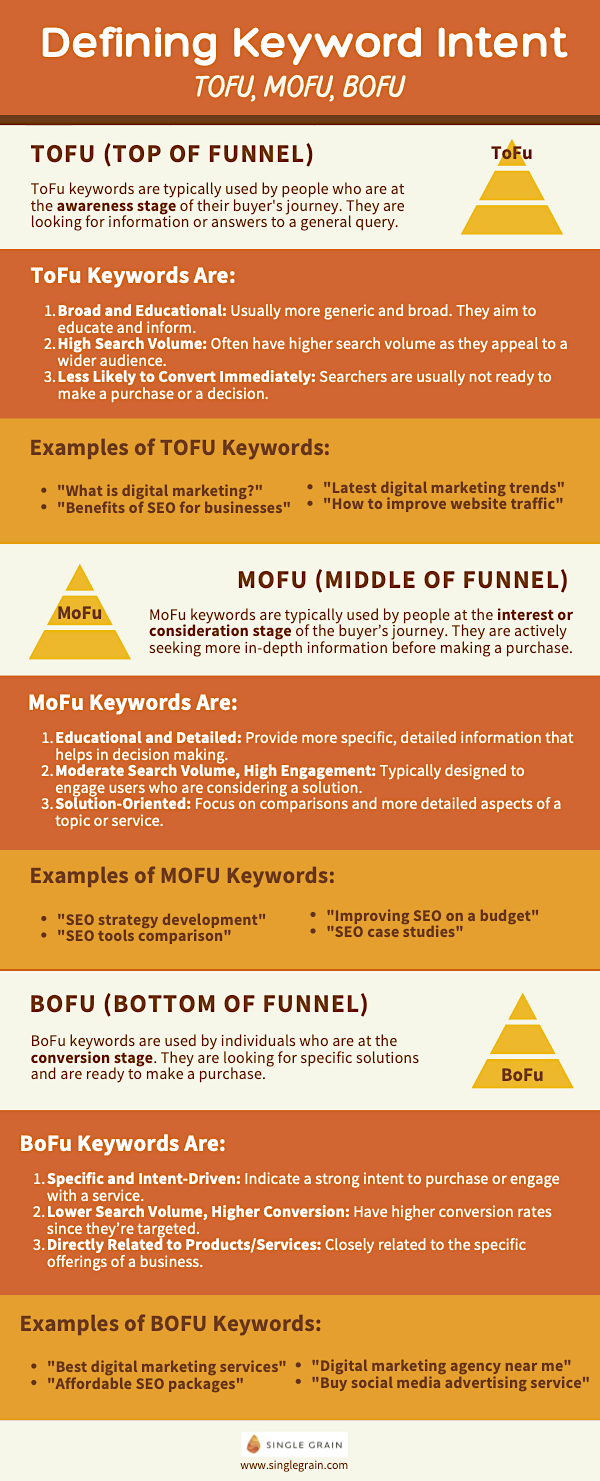AI and machine learning will inevitably impact your SEO strategy – so much so that these technologies will lead to more advanced SEO techniques which more brands will need to use to stay competitive.
More than ever before, staying ahead of the curve is crucial to outpacing your competition and growing your bottom line as we move into the new year.
From programmatic SEO to content updates and strategic acquisitions, this blog post will break down the most actionable strategies we anticipate marketers will use in 2024.
Their expertise has helped Nextiva grow its brand and overall business
Programmatic SEO: Using Templates for High-Intent Keywords
One of the advanced SEO strategies we’ve been finding a lot of success with revolves around programmatic SEO, which involves creating templates for high-intent keywords.
Here’s how it works at a high level.
1) Identify MOFU to BOFU Keywords
Instead of solely focusing on top-of-the-funnel keywords, you should target keywords that indicate high intent – middle- and bottom-of-the-funnel keywords.

For example, if you’re a competitor to Salesforce, target high-intent keywords like “Salesforce Alternatives” (MOFU) or “Salesforce vs. HubSpot” (BOFU). (“What is a CRM” would be a TOFU keyword.) Ideally, you’re going after terms that are a little more esoteric and that will be easier to rank for, thereby increasing the ease by which AI can develop content for that keyword.
With pSEO, the trick is going after low-hanging fruit in mass quantities that can afford to have less human agency in creating the content.
In the worst-case scenario, it will create a piece of content that isn’t quite to the level of quality necessary to engage the audience for a specific keyword. But the best case scenario is that, if it does it well enough, you could be appealing to a smaller snippet of your audience on a specific subject, having spent very little time doing so.
2) Create Templates
Developing keyword templates is a great way of helping you get organized and set a standard for your pSEO strategy. If you arrange your search term data in a clean way, the AI tools you use to help you build new content will have a much easier, more accurate time generating quality content on the first try.
TripAdvisor is one such site that uses this strategy. Check out their “Popular hotels in Pensacola Beach right now”:

Compared to their “Popular hotels in New York City right now”:

Programmatic SEO leverages AI and tools like ChatGPT to automate content generation and keyword research, reducing human effort and costs.
Read this guide to learn how to create Content Creation for Programmatic SEO Pages
3) Constantly Update Content
Updating existing content will still be a big part of any SEO strategy. At the very least, it will help prevent content decay on your site.
Facts and trends change, and outdated content will only hamper your SEO performance. Your audience always has new demands, and updating existing content will keep your brand relevant. Plus, updating content can enhance your SEO efforts, making you a more competitive force on the SERPs.
This is why all brands must regularly review and update their content. You can use analytics tools to flag pages that have experienced a decline in traffic year-over-year or month-over-month.
Tip: Rewrite any outdated information, add new statistics, and optimize your content for different keywords. This ensures that your content remains fresh and valuable to your audience.
Read our case study to learn how and Why You Should Update Content – Or Risk Losing The Traffic You Have [Case Study]
4) UI/UX and Page Load Speeds
A big advantage of using programmatic SEO is that you can standardize the way the content on your site looks and behaves.
Yelp does a great job of inserting any new business page into its formulaic pages, each sharing the same template. The benefit they’ve gained from this is a streamlined, repeatable system that allows pages on their site to load extremely quickly.

Acquiring Other Domains
There are a few main reasons why you should consider acquiring websites. Some website owners may struggle to increase traffic and revenue and need help with various marketing and SEO tactics. Website acquisition can also improve your brand’s SEO by attracting traffic from one domain and referring it to another.
But before acquiring a website, there are a few key points to think about:
- Identify Potential Websites: You can use tools like UberSuggest and Ahrefs to identify websites in your niche that are for sale. Look for websites with monetization potential, even if they’re struggling, as you may be able to leverage their domain authority.
- Consider Revenue and Debt: Evaluate the financial health of the website you’re interested in. Some websites may be struggling with debt, making them potential acquisition targets. Negotiate deals that are favorable to you, taking into account profitability and any possible transfer of debt.
- Regional Expansion: Acquiring websites in different regions can be an effective way to expand your global reach. It’s still necessary to conduct market research before beginning your expansion. Research your niche in specific regions to ensure you can attract an audience. Websites that align with your business and can provide valuable traffic and backlinks.
- Integration and Inspection: When acquiring websites, be prepared for integration challenges. Due diligence is crucial to uncover any hidden issues or liabilities associated with the website. What does that look like? It means assessing the keywords and content, and backlinks from other websites, ensuring the website has no technical issues.
Final Thoughts on Advanced SEO
And there we have it. This is just a glimpse into the future and the way a big chunk of SEO will likely be done moving into the new year.
The name of the game here is scaling content. These tactics we’ve highlighted are ideal for brands that are looking for ways to level up their output with fewer inputs. But just like any regular SEO strategy, it requires close attention to setting it up properly so that you can produce quality content right away.
Good luck in upping your content game!
If you’re ready to level up your brand with strategic optimization for sustainable growth, Single Grain’s SEO, pSEO & content experts can help!👇
For more insights and lessons about marketing, check out our Marketing School podcast on YouTube.


